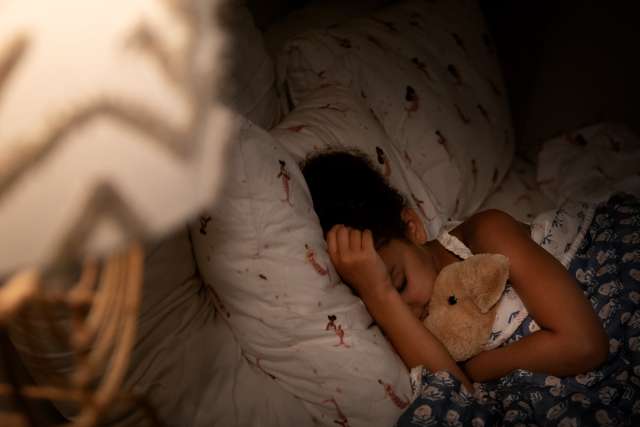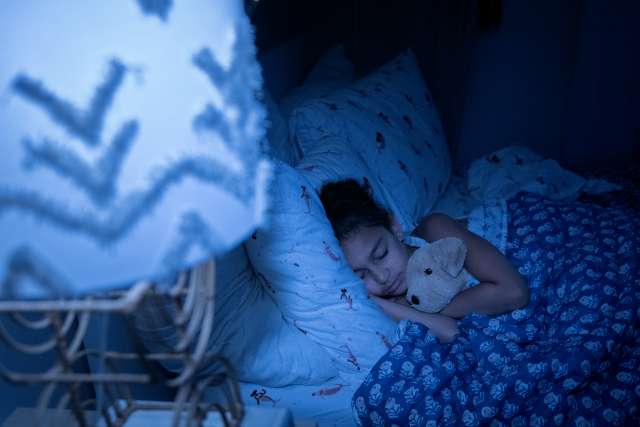The slower pace of summer often means a looser schedule, with more relaxed bedtimes and later wake times. As the new school year begins, make healthy sleep a priority to help set the tone for a successful year.
Transition takes time
For kids who have spent the summer staying up at night watching movies, going to friends’ houses or having sleepovers and then sleeping in later the next morning, the goal is to “transition back into a pattern that’s conducive to the school year,” said Sam Kashani, MD, a sleep medicine specialist and assistant clinical professor at the David Geffen School of Medicine at UCLA. Although it’s not always the case, the ideal summertime sleep schedule is one that’s not more than an hour later than the child’s regular schedule, he noted.
Allow at least a couple of weeks to fully shift back into school mode, Dr. Kashani advised. Much will depend on how much the schedule needs to be changed: a quicker and more dramatic change will be less pleasant for kids and parents than a more gradual one.
Aim for about a 20- to 30-minute shift each day, he said, using the total amount of time change required as a guide for how far in advance to start preparing.
Set the stage for sleep
If the overall approach to bedtime has become more lax, the end of summer is also a good time for a tune-up. This means paying attention to general sleep hygiene, including:
Encouraging consistency: Being consistent about bedtimes and wake times helps keep kids’ sleep rhythms on track, making it easier to put them to bed and get them up in the morning.
Ensuring a sleep environment that’s dark, cool and quiet: Black-out curtains can be helpful for rooms that get morning sunlight exposure, and keeping the thermostat on the cooler side (or taking other steps to keep rooms cool) will be the most comfortable. If there’s ambient noise that’s interfering with sleep, try using a white-noise machine to mask it. The goal, Dr. Kashani explained, is to “optimize the bedroom environment to ensure you have a sleep-promoting environment.”
Limiting evening light exposure: Sleep timing is heavily influenced by exposure to light and darkness, which influences the body’s circadian rhythm, or internal clock. A key aspect of this is the nightly release of melatonin, the hormone that prompts feelings of sleepiness, by the pineal gland. This typically happens about three hours before we fall asleep, Dr. Kashani noted.
However, nighttime light exposure can delay this process. Because bright light (and especially blue light) exposure in the evening prompts alertness, paying attention to both overall household lighting and use of electronic devices is important, he noted.
“The more bright light we expose ourselves to during the three-hour period before we naturally fall asleep,” Dr. Kashani said, “the more likelihood that the circadian rhythm will be delayed.”
Turning off or turning down overhead lights can help, as can limiting tech use. Back-lit devices such as smartphones and flat-screen TVs use LED light, which typically emits more blue light. One way to counteract this is to use the “night shift” mode on devices such as phones to dim screens automatically, Dr. Kashani noted.
Taming night-time tech use: In addition to the blue-light aspects, smartphones and other tech devices are often stimulating instead of sleep-inducing because of the content being consumed, he noted. This can be true for a wide range of content – everything from video games to TV shows to YouTube videos. It’s also quite easy for kids and teens to spend more time online or watching TV than they intended to, which also cuts into sleep time.
Given the effects of screen time on sleep, the American Academy of Pediatrics recommends shutting down devices an hour before lights out and substituting a non-tech-related wind-down routine.
The AAP also recommends removing tech devices, including smartphones, from bedrooms at night. Instead, families can set up a central charging station for devices in a common area such as the kitchen, the organization noted. Another easy fix is using alarm clocks, rather than phone apps, as wake-up alarms.
Winding down at night: Having a regular wind-down routine helps kids and teens transition to bedtime and get more sleep overall. “Kids thrive on routines,” said Dr. Kashani, adding that “consistency is everything.” This can even include doing the nightly sequence of wind-down activities in the same order, he noted.
“Have a routine where the stimulation is low from a sound and bright-light perspective and from an activity perspective,” he said. “I always tell people that in that last hour before going to bed, the less stimulation, the better.”

For young kids, shared quiet time or storytelling work well, he said. Older kids can read a book, color or take a bath as a calming bridge to bedtime.
Maximize mornings
When it’s time to wake up, opening curtains and blinds and turning on the lights will help boost alertness. Using a sunrise alarm clock that gradually brightens close to wake time can also help cue kids that it’s time to wake up.
Kids who have gotten in the habit of lingering in bed to snooze are better served by setting an alarm or having a parent wake them at the time they’re actually going to get out of bed. That’s because waking and then attempting to drift back to sleep results in fragmented, shallower sleep.
Special considerations for teens
As kids enter puberty, their internal clocks shift to a later schedule. This circadian delay means teens no longer feel sleepy as early in the evening as they used to, nor do they naturally wake as early in the morning.
Unfortunately, this schedule isn’t in sync with many school schedules, which often have early morning bells. This mismatch is a prime driver of teen sleep deprivation, given that kids who aren’t able to fall asleep until late at night and have to wake too early for school are less likely to be able to get the eight to 10 hours of sleep they need. Because of this, the AAP and other major medical and public health groups recommend that middle and high schools start no earlier than 8:30 a.m.
In 2022, California became the first state to implement later secondary school start times, requiring a minimum start time of 8 a.m. for the state’s public middle schools and 8:30 a.m. for its high schools. (While the 8 a.m. middle-school start time, a modification made to address transportation concerns, is earlier than the AAP recommendations, the law is still the only one currently in effect in the United States that limits how early schools can start.)
Other hurdles
Although this change addresses wake times, there are still a number of factors that affect teens’ ability to get to sleep at a reasonable hour. These include:
Overscheduling: When choosing a class schedule, factor in the anticipated workloads, including additional academic demands from advanced-level classes. Sports practices and other extracurricular activities can also cut into sleep, especially if they’re held before school or keep teens so busy that they don’t start their homework until late at night.
While teens may feel that they need to take as many advanced-level classes and be immersed in as many activities as they can, parents can help dial back the pressure and work with them to pare down the schedule so it’s not encroaching on sleep time.
Overextended teens whose cumulative commitments preclude them from getting enough sleep are at risk for a wide range of negative outcomes, including an increased likelihood of mental health issues, drowsy-driving crashes and substance use.
Tech use: While tech time can be a concern at any age, teens are particularly affected, especially when it comes to social media. Fear of missing out (FOMO) is strong at this age, and teens may also feel compelled to be online late into the night to avoid damaging friendships.
Additionally, because their brains are more responsive to rewards, teens are also uniquely primed for the gratification that leveling up in video games, receiving “likes” on social media and other similar online validation provide.
That said, adults are also prone to spending more time than intended engaged in online activities which have been structured to be deliberately immersive; the same tech best practices outlined for children can help adults get more sleep too.
How much sleep do kids need?
According to the National Sleep Foundation, school-age children need the following for optimal functioning:
| Age group | Hours of sleep |
|---|---|
|
|
|
|
|
|
Limit setting
It may not always be popular, but when it comes to sleep, setting and enforcing limits is key, Dr. Kashani said. “When we see kids for sleep issues or difficulties with nocturnal sleep patterns, very often the issue is inadequate limit setting.”
With younger kids, this can include sleep onset associations that need modifying, he said. The goal is for children to develop self-soothing skills and get to sleep on their own without requiring rocking or whatever behavior they’ve come to rely on.
For older kids, encouraging calming wind-down routines and monitoring behavior such as late-night tech use or other stimulating activities is similarly important, Dr. Kashani noted.
Ensuring enough sleep duration
When it comes to kids and sleep, getting enough sleep is the number one priority, Dr. Kashani said.
“You do not want to have a sleep-deprived child,” he emphasized, given that kids’ brains, which are still developing, “are much more sensitive to sleep debt and sleep deficit compared to adult brains.”
As he summed up, “The bottom line is routines, consistency and ensuring adequate healthy sleep for that person’s age group.”
Lisa L. Lewis is the author of this article.




